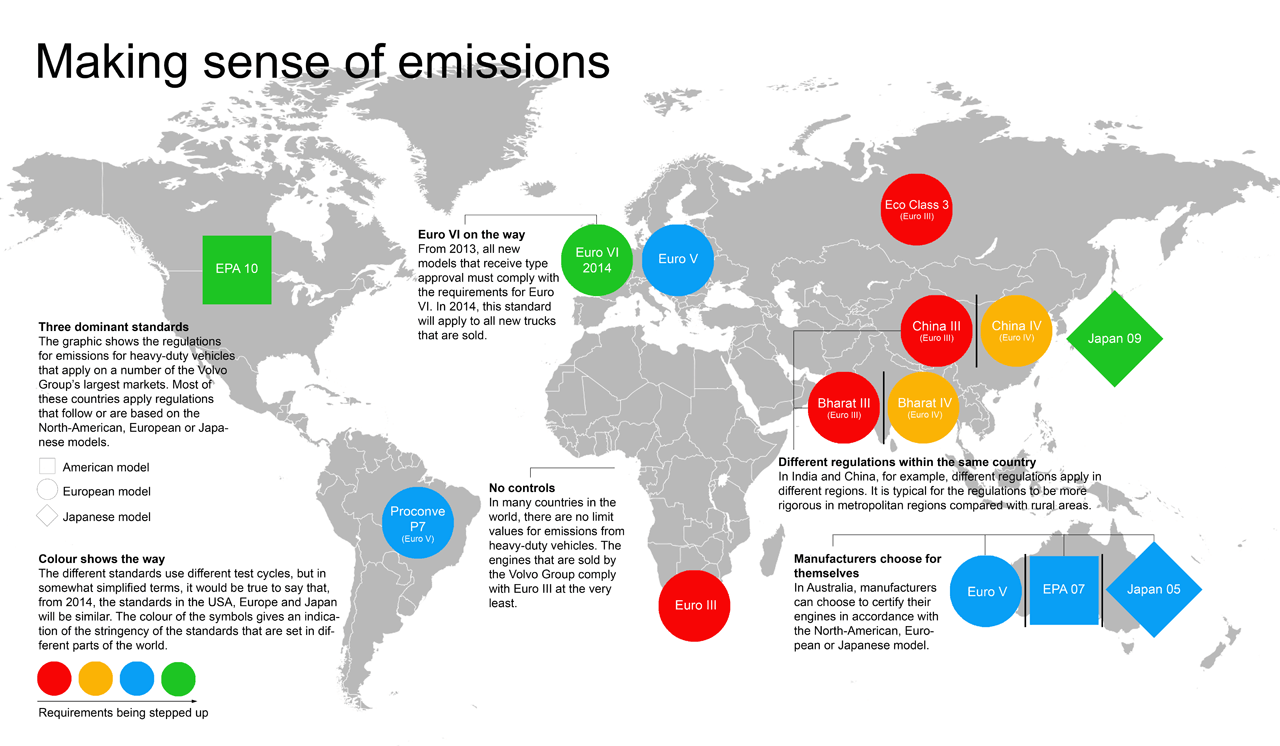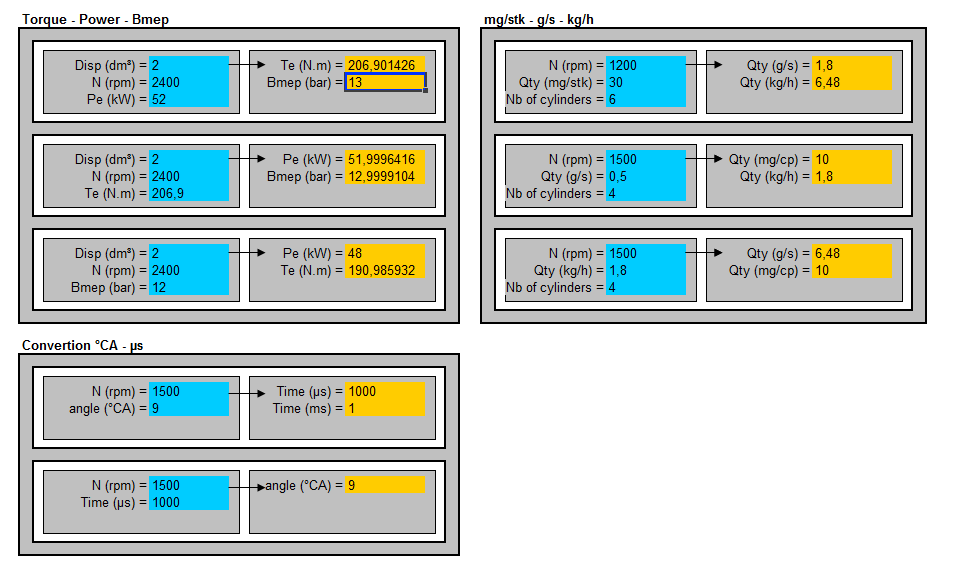The world is a patchwork of different regulations governing emissions from heavy-duty vehicles. This confusion is costing money for both manufacturers and their customers. However, the different regulations are now coming closer to one another and, on the horizon, there is legislation that also relates to fuel consumption. Global News now analyses the different terms.

Michael Hygrell works at Regulatory Affairs at Volvo Group Trucks Technology and, as he gathers together his papers after our interview, he says, “There are countries where even our local experts have difficulty determining the regulations that actually apply”.
Since emission regulations began to be introduced in different parts of the world at the end of the 1980s, the emissions from each individual truck or bus have become far cleaner. These developments can be described as positive yet varied. The authorities, governments and inter-governmental organisations in different countries and regions have adopted different limit values and use different methods for test-driving engines – otherwise known as test cycles – when certifying new models.
As things stand, most countries apply regulations that are based on different development stages of the European, North-American or Japanese model. There are several explanations for this diffuse situation. They include economics, technology and inferior fuel quality, with a high sulphur content, for example.
“To comply with the emission standards that correspond to Euro IV and Euro V, we are generally obliged to after-treat the emissions to obtain the necessary levels of cleanness. It’s important that the fuel has a sufficiently low sulphur content and low-sulphur fuel isn’t available in every country,” explains Rolf Willkrans, Director Environmental Affairs at Volvo Group.
Another problem when it comes to the introduction of more rigorous emission standards in a specific country could be that the infrastructure for the additive known as AdBlue in Europe and DEF in the USA is lacking. This additive is also required for the after-treatment of emissions. Taken as a whole, this means that a global enterprise like the Volvo Group must develop and certify engines that comply with a wide range of different regulations. This increases development costs and, at the end of the day, the cost to the customer. What is more, the time schedule for future legal requirements also impacts customers’ decisions to purchase or wait.
The three dominant standards are coming closer to one another when it comes to the levels of carbon dioxide and particulates they permit, but the certification tests still differ. The way the test cycles are designed is important for a number of reasons.
“The current legislation offers some scope for interpretation. The driving cycle that is used for Euro V, for example, does not include that much driving with a small load or when the engine is cold. So it isn’t always a good representation of the emissions in slow city traffic. Depending on the type of after-treatment system, a specific emission temperature is required to produce the level of cleanness that is obtained in tests in the laboratory,” adds Michael Hygrell.
To prevent vehicle manufacturers optimizing their engines to match the test cycles rather than attempting to reduce emissions in real-life driving conditions, new test methods have been developed. The Euro VI standard will come into effect for all new vehicles in Europe on 1 January 2014. It focuses on what the industry calls real-world emissions. This means, among other things, that, at regular intervals, a manufacturer must test-drive vehicles that are being used by customers and show the authorities that they comply with the emission standard. Similar regulations also apply in the USA.
“This is a development we welcome here at the Volvo Group. Concern for the environment is one of our core values and it’s important that rigorous requirements are not only imposed on manufacturers but are also followed up.”
Euro VI will also be the first standard to use a test cycle that is globally accepted.
“Japan is going to use the same approach for its next step, which will be taken in 2016. If the USA also came closer, that would be really good. However, many countries are going to use the European legislation as a base and in practice this will bring about harmonization,” says Michael Hygrell.
Test cycles that also measure emissions from cold engines will force vehicle manufacturers to be innovative. It is a question of finding new solutions for heating up emissions in different ways in an “artificial fashion” to achieve the required cleanness. There is also a reverse side to the coin.
“If you want low emissions at all temperatures, it will increase fuel consumption,” says Michael Hygrell.
The main challenge for all vehicle manufacturers is to comply with the emission standards and, at the same time, reduce fuel consumption more than their competitors. Rolf Willkrans explains that legal requirements are also going to be introduced in this area in the future.
“The USA is going to introduce limit values for carbon-dioxide emissions from 2014. In practice, they will be the same as the limit values for fuel consumption. In simple terms, this means that a vehicle manufacturer must stay under a specific value based on the average emissions from a certain vehicle category. In the same year, the EU will present a proposal stating that manufacturers must declare the fuel consumption of their vehicles and perhaps even apply a sticker to the actual vehicle. We believe this comparative value is going to be an important competitive weapon,” says Rolf Willkrans.
Source: Volvo Group
Romain Nicolas opinion:
From an OEM point of view, it is a headache to manage all the legislation diversity when you aim at being global. Doing a Euro3 engine for Indian market is not as simple as carrying the Euro3 engine that has been developed 10 years ago for Europe market. Indeed, every engine conceived for a specific legislation and market imply development costs which are often hard to assume by OEMs. Do you think it is possible one day to see a global harmonization of the emissions levels as it is coming for driving cycles?




















